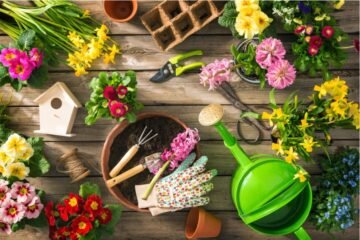Introduction
Garden tools are an essential part of every gardener’s toolkit. Over time, even the highest-quality tools can become dull and less effective. Regular maintenance, including sharpening, can extend the life of your tools and make gardening more enjoyable and efficient. In this blog, we’ll explore the importance of sharpening garden tools, the tools you’ll need, and step-by-step instructions on how to do it.
Why Sharpening Garden Tools Matters
- Efficiency: Sharp tools make cleaner cuts, reducing the effort needed for tasks like pruning and digging.
- Plant Health: Clean cuts heal faster, reducing the risk of disease and promoting healthy growth.
- Tool Longevity: Regular maintenance prevents rust and wear, extending the life of your tools.
- Safety: Dull tools can slip or require more force to use, increasing the risk of injury.
Tools You Need for Sharpening
Before you start, gather the necessary tools and materials:
- Mill File: Ideal for larger tools like shovels and hoes.
- Sharpening Stone: Perfect for smaller tools like pruners and shears.
- Metal File: Useful for maintaining the edge of various garden tools.
- Wire Brush: Helps to clean off dirt and rust.
- Lubricating Oil: Prevents rust and keeps tools in good condition.
- Safety Gear: Gloves and eye protection to ensure safe handling.
How to Sharpen Your Garden Tools
Follow these steps to keep your garden tools in top shape:
1. Cleaning
- Remove Dirt and Rust: Use a wire brush to clean off any dirt and rust. For stubborn rust, you might need to use steel wool or a rust remover.
- Dry Thoroughly: Ensure the tool is completely dry before you start sharpening.
2. Sharpening
- Shovels and Hoes:
- Secure the tool in a vice or on a stable surface.
- Use a mill file at a 45-degree angle to the edge.
- File in one direction, maintaining consistent pressure.
- Repeat until you achieve a sharp edge.
- Pruners and Shears:
- Disassemble the tool if possible for easier access.
- Use a sharpening stone or metal file to follow the existing bevel.
- File in one direction, maintaining the original angle.
- Reassemble the tool and check for smooth operation.
- Loppers and Hedge Trimmers:
- Follow the same process as for pruners and shears.
- Ensure you sharpen both blades evenly.
3. Finishing
- Lubrication: Apply a light coat of lubricating oil to the sharpened edge and moving parts to prevent rust and ensure smooth operation.
- Testing: Test the tool on a small branch or piece of wood to ensure it cuts cleanly and easily.
Maintenance Tips
- Regular Cleaning: Clean your tools after each use to prevent rust and build-up.
- Proper Storage: Store tools in a dry place. Hanging them up or using a tool rack can prevent damage.
- Routine Sharpening: Sharpen your tools regularly, especially during the active gardening season.
Conclusion
Sharpening your garden tools is a simple yet crucial part of garden maintenance. By keeping your tools sharp, you ensure that your gardening tasks are easier, your plants stay healthy, and your tools last longer. With the right tools and a bit of know-how, you can keep your garden tools in peak condition and enjoy a more efficient and satisfying gardening experience.


